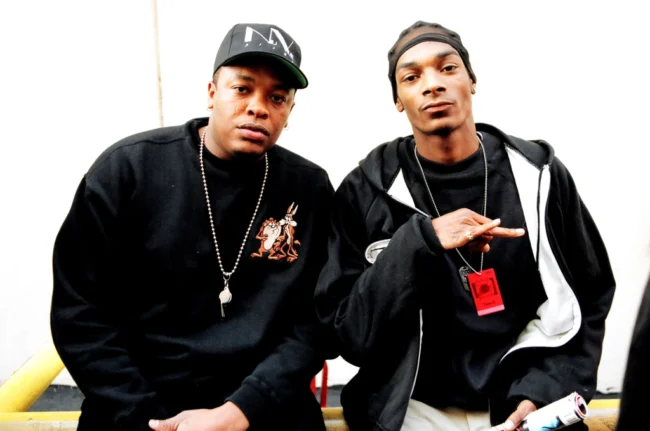In today’s music world, it is widespread for English-speaking artists to merge with Spanish-speaking artists. This is due to many factors, including globalization and technology, for example, which allow the entire globe to be connected, breaking down boundaries and distances.
But another big reason for this type of fusion is the significant impact that the Spanish language and Hispanic culture have generated in recent times around the world. More and more artists from English-speaking countries are doing projects with artists from different Spanish-speaking countries, such as Argentina, Spain, Puerto Rico, and many others.
Spanish is a language that is among the most widely spoken and has become extremely popular in every corner of the planet. The music industry is one of the biggest culprits. Spanish is a language that enamors, attracts, and generates that more and more people want to learn.
Nowadays, it is very common (and practically a boom) for people to travel to Hispanic countries to learn to speak Spanish in an academy for foreigners, such as Expanish. Argentina, Spain, and many other countries usually receive a lot of tourists who also travel to learn the language during their stay.

Even English-speaking artists often want to learn Spanish after collaborating with English-speaking artists. For example, the famous Argentine artist Gustavo Cerati has collaborated with stars such as Roger Waters. The latter, after visiting Argentina, has expressed his love for the country and has become interested in its culture and involved with political and social issues in that country.
There are several cases like this, which generates that the public is also interested and wants to learn the language; either traveling to learn Spanish Argentina, or any other country, taking online classes. Anyway, language barriers no longer exist!
It is undeniable that when a Hispanic artist does a project with an English-speaking artist, multiculturalism is promoted, significantly impacting society.
The power of the latest collaborations

One of the last songs that combined different languages and other genres is “Hawaii,”; a remix that brought together Maluma and The Weekend, where the latter sings in Spanish.
This type of fusion has proven to be a resounding success, both now and in the past. These types of projects have been produced before; in the 2000s, some collaborations were launched, such as the one with Daddy Yankee: one with rapper Snoop Dog in the song “Gangsta Zone” in 2005, and another one that took place two years later, with Fergie, called “Impacto”.
Evidently, this type of fusion has been developing for some time and has generated a kind of musical revolution. However, it was in the 2010s that this trend began to incorporate more Latin and Hispanic artists.

When this combination of languages and styles is created, the song will most likely become a hit because two large audiences are integrated in a divergent way. Latin artists have the power to make those who do not speak their language sing and dance to their songs anyway, and the same goes for English-speaking artists and Spanish audiences. In this way, the formula is 100% winning.
Such is the case of the “Despacito” remix, released by Luis Fonsi in 2017, for which Justin Bieber and Daddy Yankee collaborated. The song ranked number one on the Billboard chart and was a hit in every country; thus, the doors were opened for the following themes.
Of course, not every fusion between Hispanic and Anglo-Saxon people necessarily results in a success similar to the above example. Such is the case of the single released by Madonna in 2019 with Maluma, titled “Medellín”.
Expanding culture

Artists enjoy this type of fusion, especially Latinos, who, by participating in this kind of production, can broaden their audience and expand their culture worldwide.
Such is the case of J. Balvin, who has expressed, during an interview, that his motivation to include Anglo-Saxon artists, such as Beyonce, in the remix “Mi Gente” was based on the intention of globalizing Latin music. He commented that he does not want to make music only for Latinos but wants to take his creations to the rest of the cultures.
Thus, the artist has expanded his art thanks to the inclusion of talents such as Dua Lipa, Tainy, and Bad Bunny, who participated in his latest project, “Un día”.
Redefining music

In this way, the music industry has managed to break the boundaries between different cultures. The success obtained by associating Spanish and English-speaking music artists has set the trend, and it seems that these fusions still have a long way to go.
There are still many other countries to be integrated and many different genres to be combined. Today, reggaeton is the genre that captures the attention of millions of listeners, but who knows what the future holds?
There are many possibilities, thousands of creative sounds around the world, and many different languages that are highly appreciated. The phenomenon of these collaborations redefining music, as the influence they generate shows that multiculturalism can be very positive and nourishing for society.
Conclusion
Music has shown that audiences enjoy being immersed in styles, cultures, and languages other than their own. Integrating the different audiences that exist around the world through the combination of different languages and musical genres is not only an economic success but also promotes multiculturalism and generates that people know and are interested in other cultures.
This type of collaboration between Latin and Anglo-Saxon artists has allowed Latin music to make its way into the world and to be consumed on a massive level.
It is really exciting to try to imagine what the future holds for the music industry. Will collaborations of this style continue to evolve between artists? One thing is for sure, Spanish has become as popular as English, and it is expected to continue to grow.
